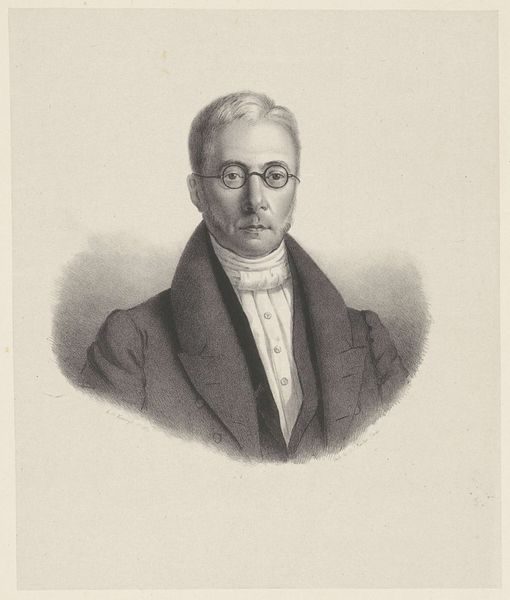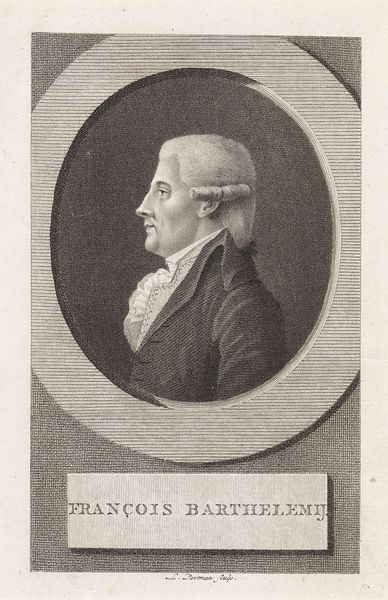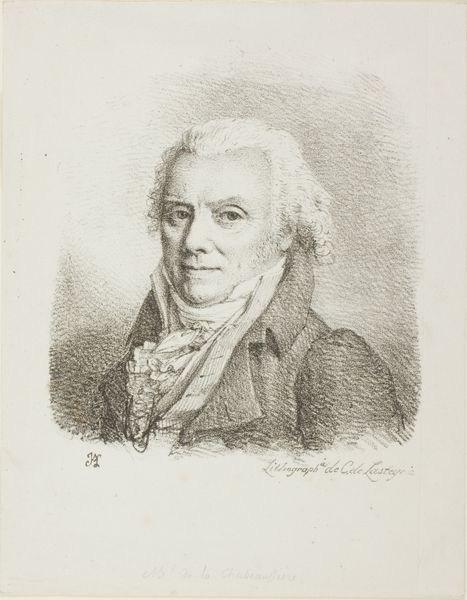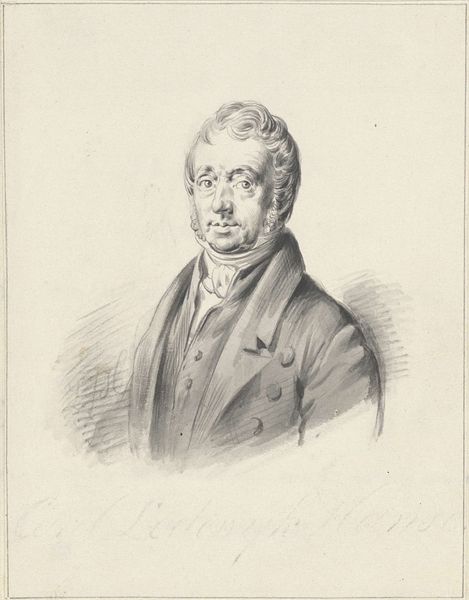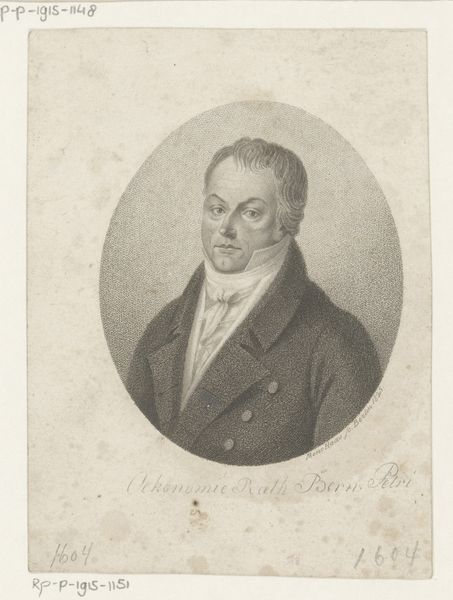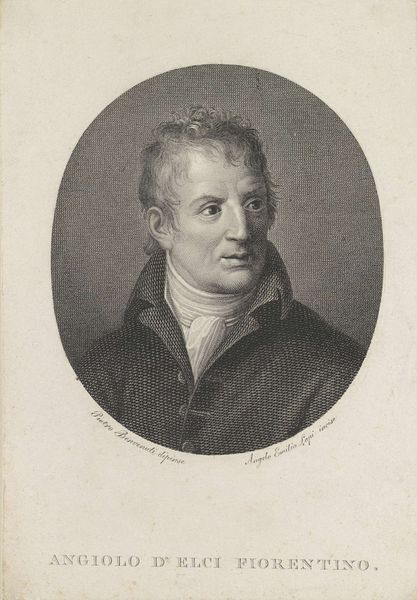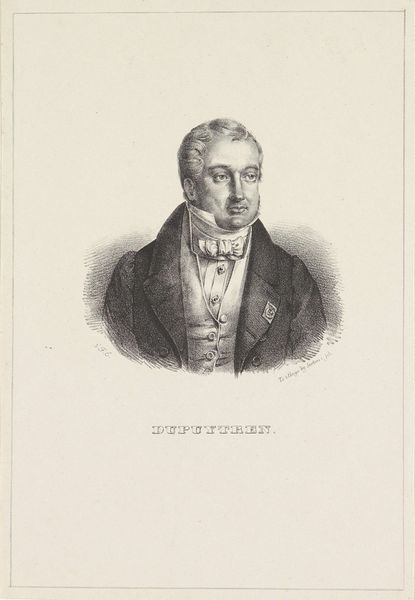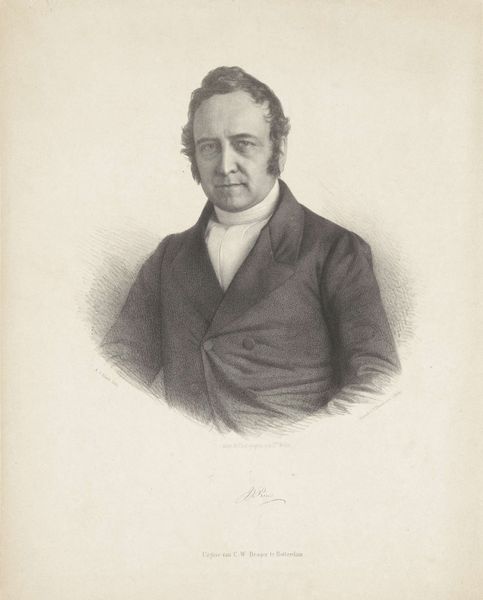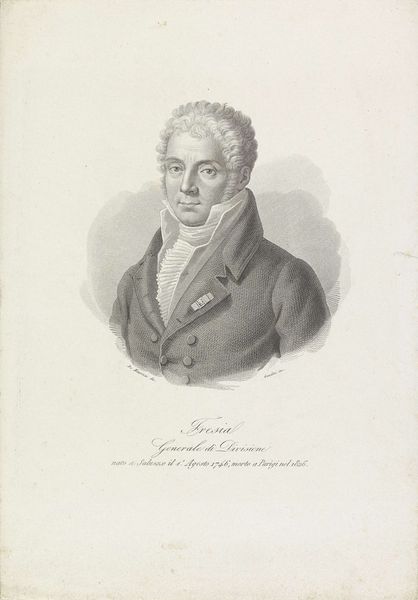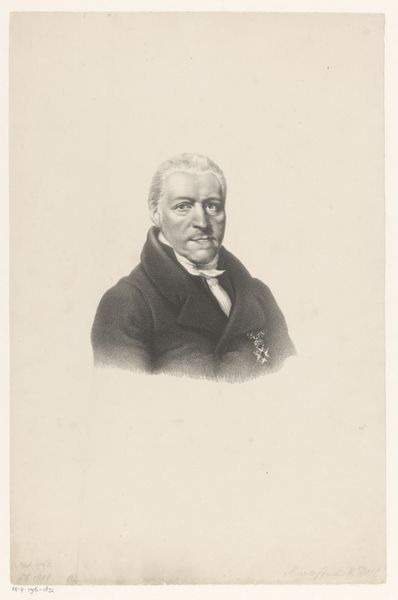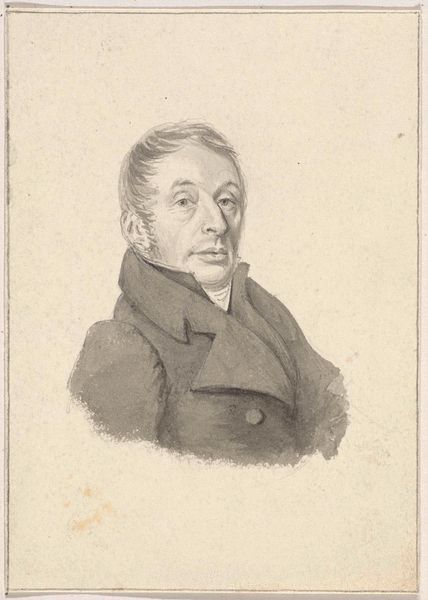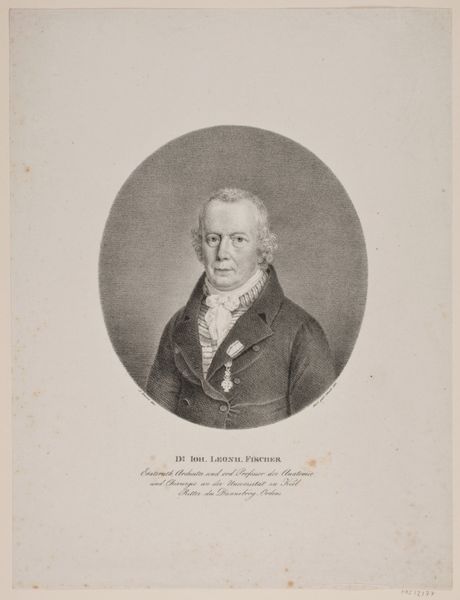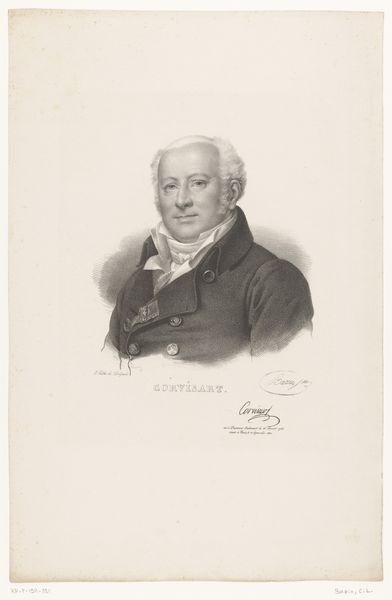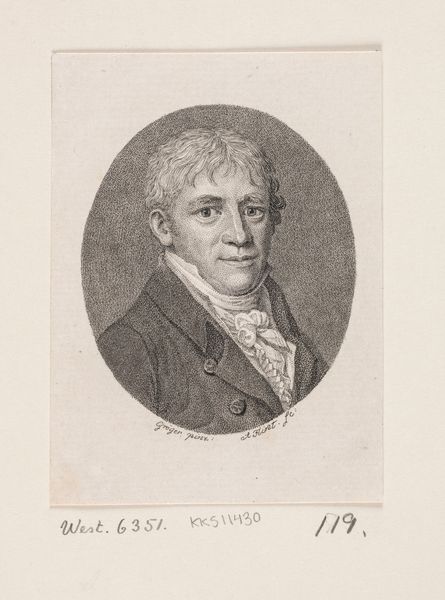
drawing, graphite
#
drawing
#
neoclacissism
#
pencil sketch
#
charcoal drawing
#
pencil drawing
#
graphite
#
animal drawing portrait
#
portrait drawing
#
academic-art
#
realism
Dimensions: height 340 mm, width 280 mm, height 485 mm, width 355 mm
Copyright: Rijks Museum: Open Domain
Curator: Let’s turn our attention to this portrait drawing hanging here at the Rijksmuseum. It's titled "Portret van David Haim Henriques de Castro" by Leonard de Koningh, created sometime between 1822 and 1845. Editor: My first impression is the intense gaze; it's a remarkably detailed pencil sketch capturing a somber mood. The textures created with graphite must have taken meticulous labor to create this level of refinement. Curator: It is fascinating, and it embodies the style of academic art with a touch of realism. It provides us with a view into the social standing of the sitter, David Haim Henriques de Castro, likely a prominent figure given the commission of such a formal portrait. Note the meticulous rendering of his attire. Editor: Exactly. I’m drawn to how the different pencil strokes convey the luxuriousness of the ruffled shirt against the tailored lines of his coat. You can almost feel the starched fabric versus the weight of the wool. What would a commission like this signify about the availability, price and consumption of those goods? Curator: That is a valuable point, given the history of Jewish people at the time. This portrait indicates the access this individual and his community had within Dutch society. Editor: The realism definitely conveys status and emphasizes the materiality of wealth through fabric. The artist really showed his mastery. Curator: The way de Koningh captured David Haim Henriques de Castro reveals something about the relationship between the artist, his patron, and the broader society that consumed such imagery. Editor: It is incredible to consider the hours of work translated into social visibility and lasting symbolic value for that class. Curator: A remarkable lens for understanding status in the 19th century! Editor: It all boils down to labor and craft, transformed into something perceived as "high art." It prompts a deeper look into art history as it examines these portraits in a new way.
Comments
No comments
Be the first to comment and join the conversation on the ultimate creative platform.
